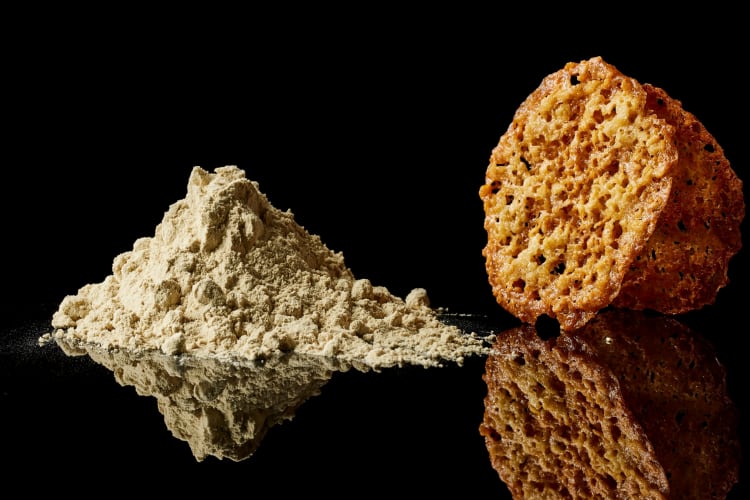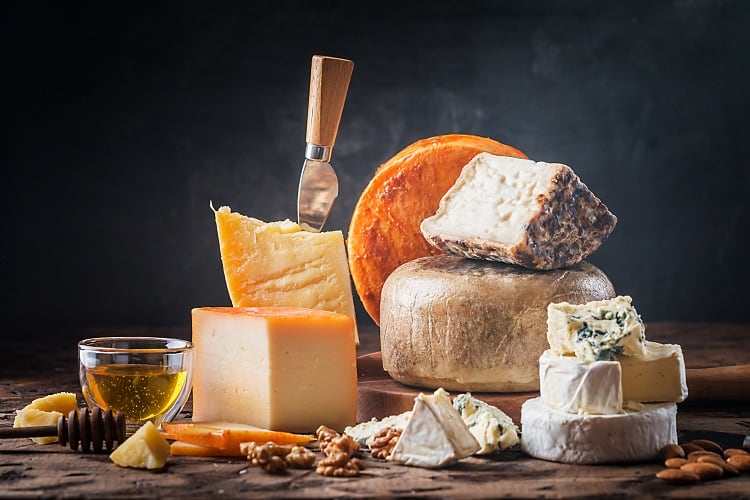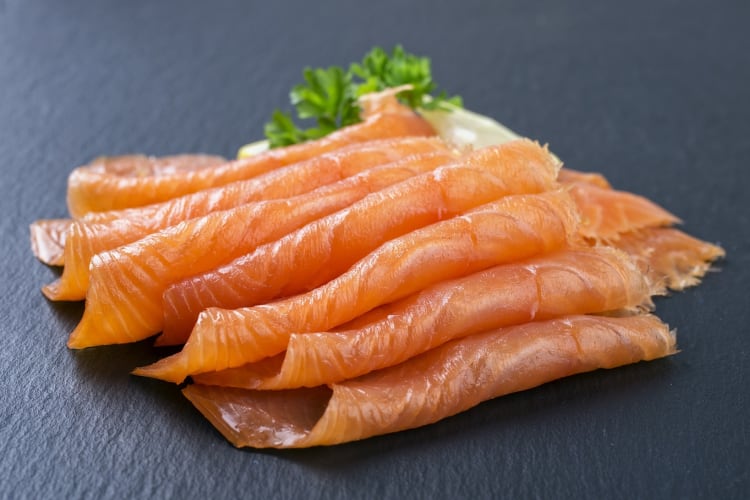As an ingredient, algae has a lot going for it. It is rich in proteins, vitamins, minerals, fibres and amino- and fatty acids. Chlorella includes vitamins D and B12 that aren’t present in other plant-derived food sources and boasts a higher amont of folate and iron than other plant-based ingredients. Supplementation with Chlorella has been linked to various health benefits, including immunomodulatory, antioxidant, antidiabetic, antihypertensive, and antihyperlipidemic activities.
Algae is not only good for you, it’s also good for the planet. Algae production uses less water than any other crop and provides 200 times more protein per acre than cattle ranching.
But as an ingredient in food applications, its green colour and strong flavour limit uses.
Founded in 2016, Danish food tech start-up Aliga Microalgae wanted to ‘make an impact’ on the food ingredients market by bringing algae from a niche ingredient to the mainstream. “Chlorella has been consumed as a dietary supplement for decades but not made it as a food ingredient yet. Our analyses concluded it was the high chlorophyll content, taste off-notes, low production yield and variations in quality that deterred food producers to use it as an core ingredient,” reflected Co-Founder and Sales Director David Erlandsson.
These were the challenges Aliga Microalgae set out to overcome.
Heterotrophic fermentation tech for yield and consistency
Addressing yield and consistency, the company built its algae factory in Denmark around heterotrophic fermentation as it believed this technology could achieve a much higher production yield compared to phototrophic production.
“We [thought] we would get a stable product quality batch after batch, which is required by food manufactures. Additionally, this technology is scalable so we can meet increasing demands from customers by increasing our production,” Erlandsson told FoodNavigator.
Having tackled these challenges the ‘last piece’ of the puzzle was to develop a white Chlorella strain with neutral taste and flavour, but which still maintained the nutritional properties of green Chlorella.
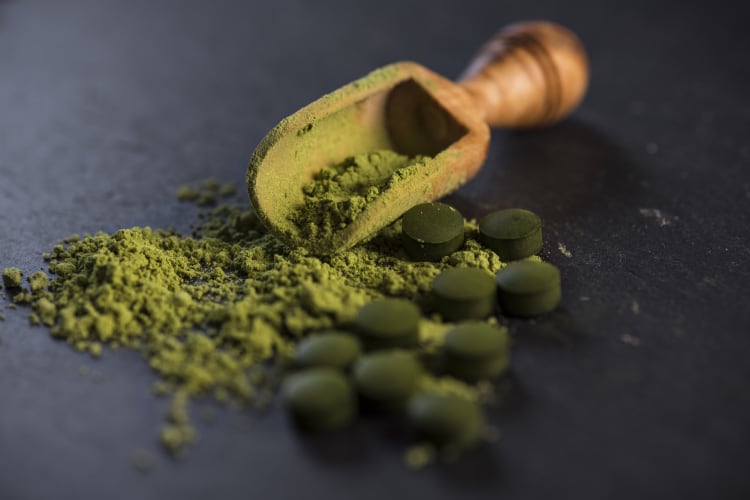
Delivering algae with a neutral taste and colour
In 2019 Aliga Microalgae started to investigate how to develop a non-GMO way to produce a white Chlorella variety. A year later, the group started a project where through random mutagenesis (natural selection) it managed to remove the gene producing the green chlorophyll.
This resulted in development of a white strain with improved organoleptic properties and a compelling nutritional profile, we were told. “Our proprietary [IP] lies in the way we have developed this white chlorophyll-free strain through random mutagenesis and the DNA sequences of it that have been protected.
“Our white Chlorella contains circa 45-50% protein with a complete amino acid profile. It has around 15% fibre, is naturally rich in vitamins and minerals as well as it is low in carbohydrates and fatty acids. This innovative protein-rich white ingredient is a vegan, plant-based, non-GMO superfood that only consists of fermented and dried Chlorella algae,” Erlandsson elaborated.
The white colour and neutral flavour ‘enable application in formulations that previously weren’t possible’, he continued.
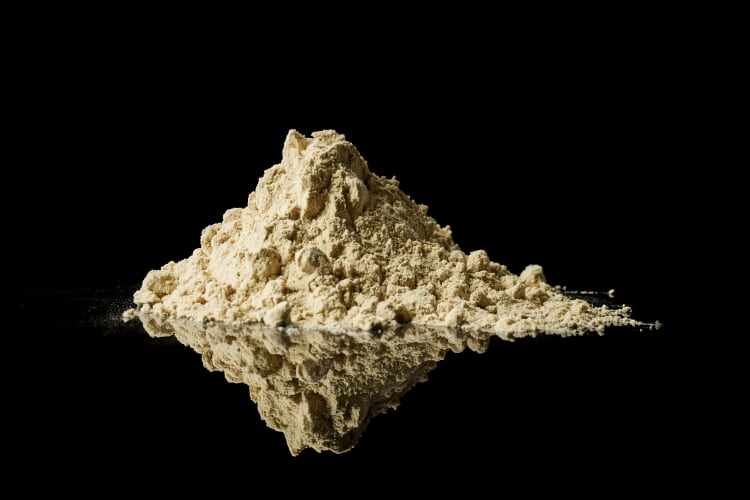
Introduced to the market this spring, Erlandsson said white Chlorella has already received an ‘incredible’ reception, earning a spot in the final of the Scale It Up Innovation Challenge hosted by Cargill, Givaudan and Bühler Group as well as selection for the EIT Foods Rising Food Star program.
The ingredient has also piqued the interest of food brands, the ingredient entrepreneur enthused. “Food manufacturers are reaching out to us at a steady flow and want to try this ingredient in different type of analogue and hybrid formulations. We are currently negotiating with leading distributors from all over Europe, Asia and the US who want to introduce this innovative ingredient to their home markets.”
Unlocking innovation opportunity
When the use of algae was previously limited, what product innovation opportunities does the new strain of white Chlorella make possible?
“When run through wet extrusion it gets long and nice fibre formations, which is key in many analogue meat and seafood raw materials,” Erlandsson detailed.
“It works very well in analogue meat and seafood products as well as in vegan cheese, pasta and several different bakery applications,” the food tech innovator revealed. “In cold cuts, our white Chlorella is successfully mixed with different alginates and coloured and flavoured to mimic different type of seafood analogues. We also have it used in vegan cheese as a protein-rich ingredient, both soft- and hard cheeses. Then it has been used in pasta with very good results. A 10% inclusion of our white Chlorella gave a very nice umami flavour to the pasta. Then it is being used as a protein-rich ingredient in different type of bakery formulations.
“Regarding functionalities, this protein-rich ingredient has hot gelling properties, some foaming functionalities as well as emulsification properties in some formulations.”
A challenge to the dominance of soy protein?
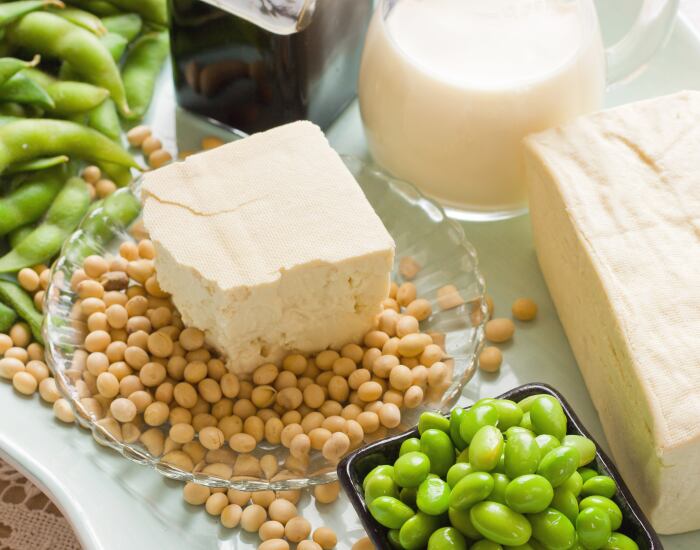
In the plant-based space, established proteins like soy are in ascendance. Could this innovation help challenge the status quo?
Certainly, there is an opportunity around aquatic plants as an emerging source of protein. Chlorella is a non-allergenic, highly nutritious plant-based protein with a strong sustainability story to tell. But Erlandsson believes it will take time to match the reach and scale of established major sources of plant-based protein.
“Both soy and pea have been around for a long time. Their production, prices and supply chain infrastructures are very efficient and mature. Chlorella isn’t there yet,” he observed.
But Erlandsson is bullish on the prospects of white Chlorella to ultimately take on the market dominance of inputs like pea, soy and wheat. “From our standpoint everything boils down to scaling production to meet the volumes food producers require when they are deciding to use a new type of ingredient in their formulations.
“Currently we see food producers interested to use sustainable algae based ingredients produce locally (in Europe) in combination with soy in their formulations. Previously they perhaps used 100% soy, now they are looking to use 10-15% white Chlorella, 25-30% pea, 20-25% field beans and only 30-45% soy in their formulations.
“We don’t see our white Chlorella replacing soy and pea, but its rich nutritional values it is a very good complement to be used when food producers are developing new type of formulations meeting the increasing demand of plant-based products.”

